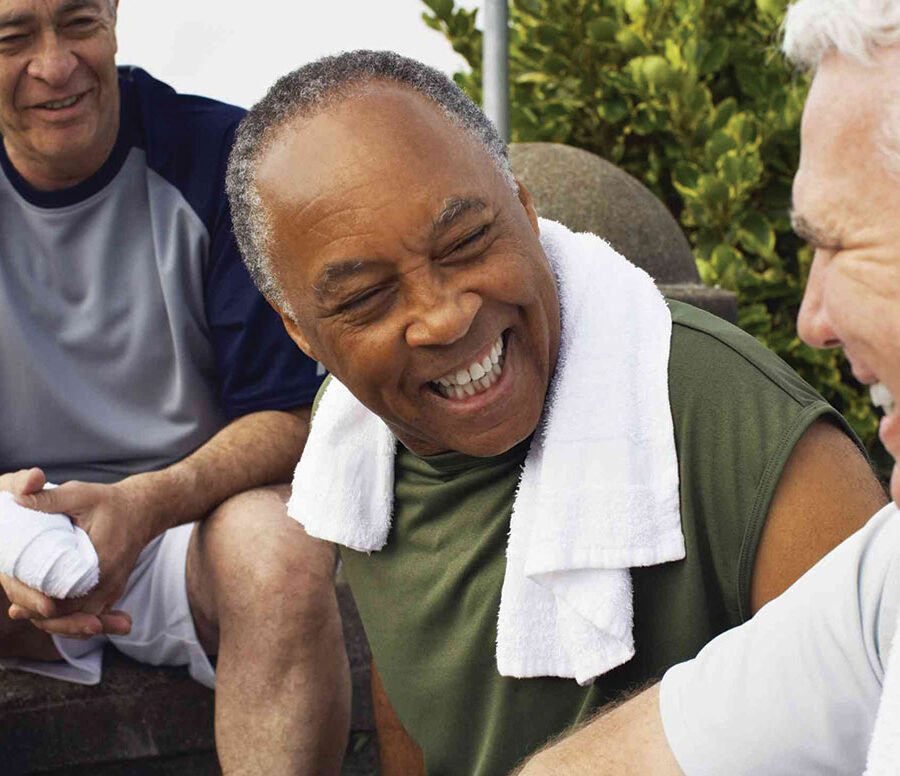Originally published on December 29, 2015 by Linda Melone, CSCS for Next Avenue.
I began working out 35 years ago at the tender age of 21 and haven’t stopped since. During that time, I’ve seen leg warmers come and thankfully go, tried Pilates, cycling and yoga, and worked as a personal trainer for 15 of those years.
I don’t recall taking more than a week off at any given time. Exercise has simply become something I do, as much as showering and brushing my teeth. I don’t think about it, I just do it.
But when I began training clients in 1995, I quickly noticed a trend: Most people quit exercising within months of starting. They’d lose their motivation for one reason or another and it was over. The American College of Sports Medicine (ACSM) backs up my observation: 25 to 35 percent of adult exercisers stop working out within two to five months of starting.
So I asked several top trainers and other people who exercise regularly how they’ve kept going through the years and what advice they could offer others. Here are our tips, starting with my personal favorite. I hope they’ll help you stick to your workouts for years to come.
Get Exercise Done First
By that I mean exercise first thing in the morning. My early morning clients were always the most consistent and dedicated. You’ll have too many excuses to skip working out by the end of the day, and you’ll likely be fatigued by then. At 6 a.m., the phone isn’t ringing yet.
See the Glass as Half Full
Take the focus off what you lose by exercising, like maybe your couch potato time, and look at all the things you gain, says Tom Holland, Ironman triathlete and author of Beat the Gym. “You can get discouraged by setting unrealistic expectations, such as quick weight-loss goals, for example. But mood boosts, gaining functional strength [the type that enables you to perform everyday tasks with ease], and easing pain [studies show that exercises help ease joint pain] can be great motivators.”
Make Do with the Time You Have
Don’t wait to have a free hour. “Short workouts and staying active throughout the day count towards calorie burning,” says Holland. “Truly fit people move around all day long. I’ll do a set of push-ups or squats during the day when I get a minute. It all adds up.” Calorie-burning known as NEAT (Non-Exercise Activity Thermogenesis) refers to calories you burn doing small activities during the day. Fidgeting, getting up and down for water or to use the bathroom all count towards weight maintenance.
Get Out
“I think it’s important to get out of the house,” says Richard Moore, 57, a 40-plus year veteran of weight training and gym membership holder, and president of Coldwell Banker Platinum Properties in Irvine, California. “I have equipment at home, but I find it hard to get motivated.”
Moore hits the gym at 5 a.m. most days and does a 35-mile bike ride with a friend on Sunday mornings. “It’s a bit of an obsession. I can’t imagine myself not lifting weights,” Moore adds.
His best tip? Take out your workout clothes the night before so you don’t have to think about what to wear when you get up. It could be the difference between working out and going back to bed.
Imagine the Future
“Picture yourself years from now,” says Mark Nutting, 58, co-owner of Jiva Fitness in Easton, Pennsylvania. “When you reach 50 years old, you potentially have another 50 in front of you. Ask yourself: What are those years going to look like? Will they be filled with new activities that challenge you and keep you engaged in life or will they be years of disability, walkers and caretakers?” If you envision the former, you’ll be sure to keep up your fitness. Adds Nutting: “Ask yourself, ‘What would happen if I stopped?’”
Keep Up Appearances
Both Moore and Nutting admit that vanity also keeps them going. “You not only look better, but working out increases your self-confidence and makes you feel better about yourself,” says Moore. Nutting agrees: “It’s our pride in ourselves. Vanity is not a bad thing. I own it.”
Cut Yourself Slack
Mix in easier workouts along with tough ones. “I used to hate running,” admits Alison Heilig, fitness coach and author of The Durable Runner: A Guide to Injury-Free Running. “But I’ve been doing it regularly for nearly 10 years now.” Her secret: “I always have at least one workout each week at an effort, intensity and duration I enjoy. Pushing hard for progress is great, but who cares if you’re feeling overworked all the time?” It’s about balance.
Expect Your Motivations to Shift Over Time
“As someone in her 50s, I can tell you that my inspiration has changed over the years,” says Lisa Wheeler, star of the Weight Watchers: 7 Day Tone & Burn DVD. “I adapt to what excites me now. As long as I am staying physical, paying attention to my mobility and stability, and finding the joy of movement, I am good to go!”
Whatever brings you joy and helps you build community with your fellow exercisers is what will keep you coming back, she adds.
In the end, exercise is a matter of finding pleasure either within the activity itself or realizing the benefits to your body and mind. The best way to avoid starting over is to never stop.
Learn more senior workout tips on the Health & Wellness section of our blog!
© Next Avenue – 2024. All rights reserved.
Want to find out more?
If you’d like to stay up to date with Bethesda Health Group, sign up here to receive our blog and newsletters!
"*" indicates required fields
Related Articles
Want to find out more?
If you’d like to stay up to date with Bethesda Health Group, sign up here to receive our blog and newsletters!
"*" indicates required fields



